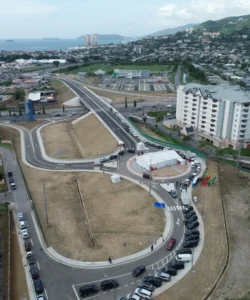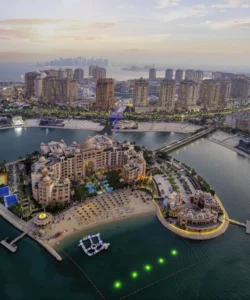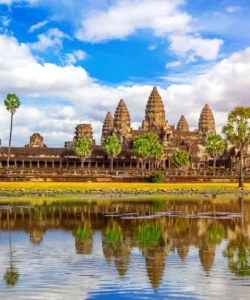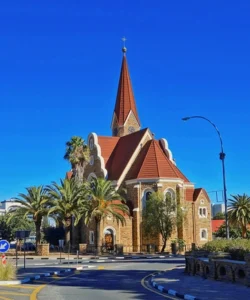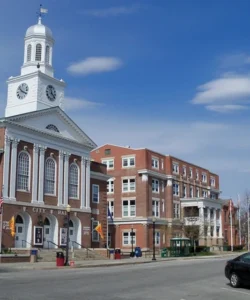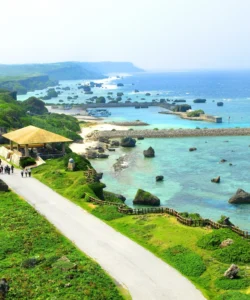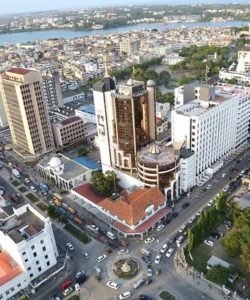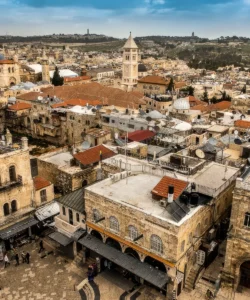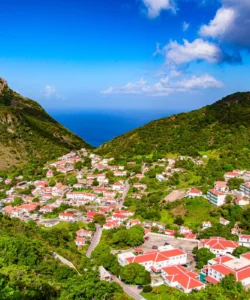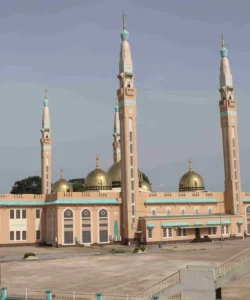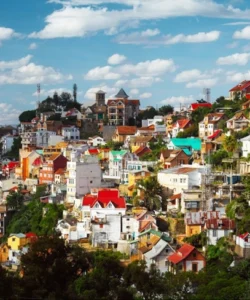Spain, officially the Kingdom of Spain, is a country primarily located in Southwestern Europe, with parts of its territory also in the Atlantic Ocean and Africa. It occupies most of the Iberian Peninsula. Spain is a nation of immense cultural richness, diverse landscapes, and a history that has profoundly influenced the world, particularly through its Golden Age and colonial empire.
![]()
Area and Population:
Spain covers an area of approximately 505,990 km² (195,360 sq mi). As of early 2025, its population is estimated to be around 48.6 million.
Capital:
The capital city of Spain is Madrid.
Major Cities:
Besides Madrid, other major cities include Barcelona, Valencia, Seville (Sevilla), Zaragoza, Málaga, Murcia, and Bilbao.
Language:
The official language of Spain is Castilian Spanish (Español / Castellano). However, several co-official regional languages are also widely spoken:
- Catalan (in Catalonia, Valencia (as Valencian), and the Balearic Islands)
- Galician (in Galicia)
- Basque (in the Basque Country and parts of Navarre)
English is increasingly understood and spoken, especially in major tourist areas and among younger generations.
Currency:
As a member of the European Union and the Eurozone, Spain uses the Euro (€) as its official currency.
Religion:
The dominant religion in Spain is Roman Catholicism, with the majority of the population identifying as Catholic, though active religious practice has been declining. There are smaller communities of other Christian denominations, Muslims, and others. A significant and growing percentage of the population identifies as non-religious or atheist.
Attractions and Wonders:
- Madrid’s Cultural Hub:
- Prado Museum (Museo del Prado): One of the world’s finest art museums, home to masterpieces by Goya, Velázquez, El Greco, and others.
- Royal Palace of Madrid (Palacio Real de Madrid): The official residence of the Spanish Royal Family, though mostly used for state ceremonies.
- Retiro Park (Parque del Buen Retiro): A vast and beautiful park, perfect for strolling, boating, and enjoying street performers.
- Plaza Mayor: A grand and historic square in the heart of Madrid.
- Barcelona’s Modernist Marvels:
- Sagrada Familia: Antoni Gaudí’s unfinished masterpiece, a breathtaking basilica combining Gothic and Art Nouveau forms, still under construction.
- Park Güell: Another of Gaudí’s whimsical creations, a vibrant public park with unique architectural elements.
- Barri Gòtic (Gothic Quarter): Barcelona’s historic center with narrow, winding streets, medieval buildings, and charming squares.
- La Rambla: A famous tree-lined pedestrian street leading to the waterfront.
- Southern Spain’s Moorish Heritage:
- Alhambra and Generalife, Granada: A stunning Moorish palace and fortress complex, a UNESCO World Heritage site, renowned for its exquisite Islamic art and architecture, and beautiful gardens.
- Mezquita-Cathedral of Córdoba: A UNESCO World Heritage site, a unique architectural masterpiece that was once a grand mosque and is now a Catholic cathedral, showcasing a blend of Islamic and Christian styles.
- Alcázar of Seville: A magnificent royal palace, a UNESCO World Heritage site, known for its beautiful Mudejar architecture and lush gardens.
- Seville Cathedral and Giralda: A UNESCO World Heritage site, the largest Gothic cathedral in the world, with its iconic bell tower (the former minaret of the mosque).
- Other Iconic Attractions:
- Camino de Santiago (Way of St. James): A network of ancient pilgrimage routes leading to the shrine of the apostle Saint James the Great in Santiago de Compostela.
- Guggenheim Museum Bilbao: A spectacular contemporary art museum designed by Frank Gehry, a global architectural icon.
- City of Arts and Sciences, Valencia: A futuristic complex of museums, cinemas, and an oceanarium designed by Santiago Calatrava.
- Mount Teide, Tenerife (Canary Islands): Spain’s highest peak and an active volcano, located in Teide National Park (a UNESCO World Heritage site), offering unique volcanic landscapes.
- Ibiza (Balearic Islands): World-famous for its vibrant nightlife, beautiful beaches, and charming old town (Dalt Vila, a UNESCO site).
- Ronda: A dramatic town in Andalusia, perched on cliffs with its iconic Puente Nuevo bridge spanning a deep gorge.
- Picos de Europa National Park: A stunning mountain range in northern Spain, popular for hiking and wildlife.
Architecture:
Spanish architecture is incredibly diverse, reflecting centuries of invasions, religious influences, and distinct regional styles.
- Roman: Remnants of aqueducts (Segovia), theaters (Mérida), and bridges.
- Visigothic and Asturian Pre-Romanesque: Early Christian structures in the north.
- Moorish (Islamic): Highly influential in Andalusia (Alhambra, Mezquita, Alcázar), characterized by intricate geometric patterns, horseshoe arches, calligraphy, and lush courtyards.
- Romanesque (11th-13th Century): Solid and monumental churches, particularly along the Camino de Santiago.
- Gothic (13th-16th Century): Grand cathedrals with soaring vaults and intricate facades (e.g., Seville, Burgos, Toledo).
- Mudejar: A unique Christian architectural style incorporating Islamic decorative elements and craftsmanship, particularly in brickwork and woodwork.
- Renaissance: Emerged from the 16th century, often blending with Plateresque (highly ornate facades) and Herrerian (austere, classical) styles.
- Baroque: Flourished in the 17th and 18th centuries, with highly ornamental facades and altarpieces (churrigueresque style).
- Modernisme (Catalan Art Nouveau, late 19th – early 20th Century): Unique to Catalonia, led by Antoni Gaudí, characterized by organic forms, vibrant colors, and innovative use of materials (Sagrada Familia, Park Güell, Casa Batlló).
- Contemporary: Leading architects have created striking modern structures across Spain (e.g., Guggenheim Museum Bilbao, City of Arts and Sciences Valencia).
Roads:
Spain has an excellent, modern, and extensive road network, making travel throughout the country very efficient.
- Autopistas (Motorways – A-roads or AP-roads): A comprehensive system of multi-lane, high-speed highways (marked with blue signs and “A” or “AP” numbers). Many are tolled (peaje), especially the “AP” routes.
- Autovías (Dual Carriageways – A-roads): Similar to motorways but generally untolled (marked with blue signs and “A” numbers). They form the backbone of the free highway network.
- Carreteras Nacionales (National Roads – N-roads): A network of strategic trunk roads (marked with red signs and “N” numbers) that often run parallel to motorways, providing free alternatives, though slower.
- Carreteras Regionales/Locales: A vast network of regional and local roads, varying in quality, providing access to smaller towns and rural areas.
- Mountain Roads: In regions like the Pyrenees, Picos de Europa, or Sierra Nevada, roads can be winding and challenging, requiring careful driving, especially in winter.
- Signage: Road signs are clear and generally in Spanish.
Driving is a popular and convenient way to explore Spain, especially for reaching rural areas or enjoying scenic routes.
Hotels:
Spain offers an incredibly diverse range of accommodation options, from luxury resorts to charming boutique hotels and traditional guesthouses.
- Luxury and 5-Star Hotels: Found in major cities (Madrid, Barcelona, Seville) and popular coastal resorts (Marbella, Ibiza), offering high-end amenities and services. International luxury chains are well-represented.
- Paradores: A unique Spanish network of state-run hotels located in historic buildings such as castles, monasteries, and palaces, often in stunning natural settings, offering a luxurious and culturally immersive experience.
- Boutique Hotels: Numerous stylish and unique boutique hotels are found in historic city centers and charming towns across the country.
- Resorts: Abundant along the Mediterranean and Atlantic coasts (Costa del Sol, Costa Brava, Balearic and Canary Islands), offering various facilities for package tourists and families.
- Rural Tourism (Casas Rurales): Charming rural houses or guesthouses, popular in regions like Andalusia, Castile, and Galicia, offering an authentic countryside experience.
- Chain Hotels: Major international and Spanish hotel chains (e.g., Meliá, NH Hotels) are widely available.
- Apartments and Holiday Rentals: Very popular, especially in coastal areas and major cities, for self-catering.
- Hostels and Pensiones: Budget-friendly options found in cities and along pilgrimage routes.
Restaurants and Cuisine:
Spanish cuisine is vibrant, diverse, and famous worldwide, known for its emphasis on fresh, local ingredients, olive oil, and bold flavors. It is highly regional, with distinct culinary traditions across different areas.
- Tapas: Small savory dishes, perfect for sharing and sampling a variety of flavors, a fundamental part of Spanish social culture.
- Paella (Valencia): A famous rice dish, traditionally made with rabbit, chicken, green beans, and saffron, cooked in a wide, shallow pan. Many variations exist, including seafood paella.
- Jamón Ibérico: Cured Iberian ham, a highly prized delicacy, often served in thin slices as a tapa.
- Tortilla Española (Spanish Omelette): A thick omelette made with eggs, potatoes, and sometimes onions.
- Gazpacho (Andalusia): A refreshing cold soup made from raw, blended vegetables (tomatoes, cucumbers, peppers, garlic, olive oil).
- Seafood: Given its extensive coastline, fresh seafood is abundant, especially in coastal regions (e.g., grilled fish, prawns, octopus a la gallega).
- Churros con Chocolate: Fried dough pastries, often eaten for breakfast or as a snack, dipped in thick hot chocolate.
- Croquetas: Small, fried, breaded rolls with a creamy béchamel filling, often with ham, chicken, or mushrooms.
- Patatas Bravas: Fried potato cubes served with a spicy tomato sauce (brava sauce).
- Pulpo a la Gallega (Galician Octopus): Boiled octopus seasoned with paprika, rock salt, and olive oil.
- Fabada Asturiana (Asturias): A rich bean stew with various meats and sausages.
- Migas: A dish made from fried breadcrumbs, often with various additions like chorizo, bacon, or grapes.
Drinks:
- Wine: Spain is one of the world’s largest wine producers, famous for:
- Rioja: Renowned red wines.
- Cava: Sparkling wine from Catalonia.
- Sherry (Jerez): Fortified wine from Andalusia.
- Ribera del Duero, Priorat, Rías Baixas (Albariño): Other important wine regions.
- Sangria: A refreshing punch made with red wine, chopped fruit, spirits, and a sweetener.
- Beer (Cerveza): Popular lagers like Mahou, San Miguel, Cruzcampo.
- Sidra (Cider): Especially popular in Asturias, often poured from a height to aerate it.
- Coffee: Strong coffee culture, with various types of espresso-based drinks.
Dining in Spain is a vibrant social experience, ranging from lively tapas bars and traditional bodegas to casual restaurants (restaurantes de menú del día) offering set lunches and sophisticated Michelin-starred establishments. The timing of meals tends to be later than in many other European countries.

